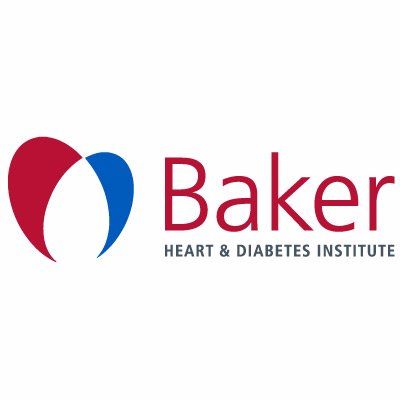预约演示
更新于:2025-11-08
CSL-111
更新于:2025-11-08
概要
基本信息
原研机构 |
在研机构- |
权益机构- |
最高研发阶段无进展临床阶段不明 |
首次获批日期- |
最高研发阶段(中国)- |
特殊审评- |
关联
100 项与 CSL-111 相关的临床结果
登录后查看更多信息
100 项与 CSL-111 相关的转化医学
登录后查看更多信息
100 项与 CSL-111 相关的专利(医药)
登录后查看更多信息
13
项与 CSL-111 相关的文献(医药)2020-11-06·Circulation research1区 · 医学
Apo AI Nanoparticles Delivered Post Myocardial Infarction Moderate Inflammation
1区 · 医学
Article
作者: Reddy, Medini ; Drew, Brian G. ; Kingwell, Bronwyn A. ; Siebel, Andrew L. ; Richart, Adele L. ; Natoli, Alaina L. ; Murphy, Andrew J. ; Didichenko, Svetlana A. ; Heywood, Sarah E. ; Lancaster, Graeme L. ; Khalaji, Mina ; Navdaev, Alexei V. ; Carey, Andrew L.
Rationale::
Decades of research have examined immune-modulatory strategies to protect the heart after an acute myocardial infarction and prevent progression to heart failure but have failed to translate to clinical benefit.
Objective::
To determine anti-inflammatory actions of n-apo AI (Apo AI nanoparticles) that contribute to cardiac tissue recovery after myocardial infarction.
Methods and Results::
Using a preclinical mouse model of myocardial infarction, we demonstrate that a single intravenous bolus of n-apo AI (CSL111, 80 mg/kg) delivered immediately after reperfusion reduced the systemic and cardiac inflammatory response. N-apo AI treatment lowered the number of circulating leukocytes by 30±7% and their recruitment into the ischemic heart by 25±10% (all
P
<5.0×10
−2
). This was associated with a reduction in plasma levels of the clinical biomarker of cardiac injury, cardiac troponin-I, by 52±17% (
P
=1.01×10
−2
). N-apo AI reduced the cardiac expression of chemokines that attract neutrophils and monocytes by 60% to 80% and lowered surface expression of integrin CD11b on monocytes by 20±5% (all
P
<5.0×10
−2
). Fluorescently labeled n-apo AI entered the infarct and peri-infarct regions and colocalized with cardiomyocytes undergoing apoptosis and with leukocytes. We further demonstrate that n-apo AI binds to neutrophils and monocytes, with preferential binding to the proinflammatory monocyte subtype and partially via SR-BI (scavenger receptor BI). In patients with type 2 diabetes, we also observed that intravenous infusion of the same n-apo AI (CSL111, 80 mg/kg) similarly reduced the level of circulating leukocytes by 12±5% (all
P
<5.0×10
−2
).
Conclusions::
A single intravenous bolus of n-apo AI delivered immediately post–myocardial infarction reduced the systemic and cardiac inflammatory response through direct actions on both the ischemic myocardium and leukocytes. These data highlight the anti-inflammatory effects of n-apo AI and provide preclinical support for investigation of its use for management of acute coronary syndromes in the setting of primary percutaneous coronary interventions.
2020-04-01·Anesthesiology1区 · 医学
Reconstituted High-density Lipoprotein Therapy Improves Survival in Mouse Models of Sepsis
1区 · 医学
Article
作者: Duranteau, Jacques ; Montravers, Philippe ; Viranaicken, Wildriss ; Tanaka, Sebastien ; Planesse, Cynthia ; Zappella, Nathalie ; Denamur, Erick ; Meilhac, Olivier ; Couret, David ; Bringart, Matthieu ; Geneve, Claire ; Louedec, Liliane ; Yong-Sang, Jennyfer
Abstract:
Background:
High-density lipoproteins exert pleiotropic effects including antiinflammatory, antiapoptotic, and lipopolysaccharide-neutralizing properties. The authors assessed the effects of reconstituted high-density lipoproteins (CSL-111) intravenous injection in different models of sepsis.
Methods:
Ten-week-old C57BL/6 mice were subjected to sepsis by cecal ligation and puncture or intraperitoneal injection of Escherichia coli or Pseudomonas aeruginosa pneumonia. CSL-111 or saline solution was administrated 2 h after the sepsis. Primary outcome was survival. Secondary outcomes were plasma cell-free DNA and cytokine concentrations, histology, bacterial count, and biodistribution.
Results:
Compared with saline, CSL-111 improved survival in cecal ligation and puncture and intraperitoneal models (13 of 16 [81%] survival rate vs. 6 of 16 [38%] in the cecal ligation and puncture model; P = 0.011; 4 of 10 [40%] vs. 0 of 10 [0%] in the intraperitoneal model; P = 0.011). Cell-free DNA concentration was lower in CSL-111 relative to saline groups (68 [24 to 123] pg/ml vs. 351 [333 to 683] pg/ml; P < 0.001). Mice injected with CSL-111 presented a decreased bacterial count at 24 h after the cecal ligation and puncture model both in plasma (200 [28 to 2,302] vs. 2,500 [953 to 3,636] colony-forming unit/ml; P = 0.021) and in the liver (1,359 [360 to 1,648] vs. 1,808 [1,464 to 2,720] colony-forming unit/ml; P = 0.031). In the pneumonia model, fewer bacteria accumulated in liver and lung of the CSL-111 group. CSL-111–injected mice had also less lung inflammation versus saline mice (CD68+ to total cells ratio: saline, 0.24 [0.22 to 0.27]; CSL-111, 0.07 [0.01 to 0.09]; P < 0.01). In all models, no difference was found for cytokine concentration. 111Indium bacterial labeling underlined a potential hepatic bacterial clearance possibly promoted by high-density lipoprotein uptake.
Conclusions:
CSL-111 infusion improved survival in different experimental mouse models of sepsis. It reduced inflammation in both plasma and organs and decreased bacterial count. These results emphasized the key role for high-density lipoproteins in endothelial and organ protection, but also in lipopolysaccharide/bacteria clearance. This suggests an opportunity to explore the therapeutic potential of high-density lipoproteins in septic conditions.
Editor’s Perspective:
What We Already Know about This Topic:
What This Article Tells Us That Is New:
2020-02-01·Arteriosclerosis, thrombosis, and vascular biology
Letter by van der Vorst et al Regarding Article, “Anti-Inflammatory Effects of HDL (High-Density Lipoprotein) in Macrophages Predominate Over Proinflammatory Effects in Atherosclerotic Plaques”
Letter
作者: van der Vorst, Emiel P.C. ; Donners, Marjo M.P.C. ; Biessen, Erik A.L.
Proposes the induction of ER stress as a main trigger for the pro-inflammatory effects by activating the IRE1a/ASK1 /p38 MAPK axis and intriguingly this signaling pathway is upstream of NF-κΒ and could, therefore, be integrated in the signaling effects that were previously observed and confirmed in the present study and It would be interesting to validate the role of specific PKC isoforms in this signaling axis and evaluate a potential role for PKC in ER stress.The indication that CSL-1 1 1 and endogenous HDL/ApoA-I have very distinct properties was highlighted by.The fact that peritoneal macrophages isolated after in vivo rHDL (reconstituted HDL; CSL-111) injection demonstrated significant, albeit minor, reductions whereas those from ApoA-I transgenic mice showed strong upregulation of inflammatory cytokine expression.Finally HDL affects plaque macrophages, a relevant question left unanswered in previous studies and CD11b+ cells isolated from the aortic wall of atherogenic mice showed mild anti-inflammatory effects of (in vitro validated anti-inflammatory) CSL-111 treatment.The author concluded that role of HDL in macrophages, harmonizing the reported Janus-faced roles of HDL in macrophages into a single model.
100 项与 CSL-111 相关的药物交易
登录后查看更多信息
研发状态
10 条进展最快的记录, 后查看更多信息
登录
| 适应症 | 最高研发状态 | 国家/地区 | 公司 | 日期 |
|---|---|---|---|---|
| 急性冠状动脉综合征 | 临床阶段不明 | 加拿大 | 2017-01-06 | |
| 脑卒中 | 临床前 | 澳大利亚 | 2015-11-06 |
登录后查看更多信息
临床结果
临床结果
适应症
分期
评价
查看全部结果
| 研究 | 分期 | 人群特征 | 评价人数 | 分组 | 结果 | 评价 | 发布日期 |
|---|
No Data | |||||||
登录后查看更多信息
转化医学
使用我们的转化医学数据加速您的研究。
登录
或

药物交易
使用我们的药物交易数据加速您的研究。
登录
或

核心专利
使用我们的核心专利数据促进您的研究。
登录
或

临床分析
紧跟全球注册中心的最新临床试验。
登录
或

批准
利用最新的监管批准信息加速您的研究。
登录
或

生物类似药
生物类似药在不同国家/地区的竞争态势。请注意临床1/2期并入临床2期,临床2/3期并入临床3期
登录
或

特殊审评
只需点击几下即可了解关键药物信息。
登录
或

生物医药百科问答
全新生物医药AI Agent 覆盖科研全链路,让突破性发现快人一步
立即开始免费试用!
智慧芽新药情报库是智慧芽专为生命科学人士构建的基于AI的创新药情报平台,助您全方位提升您的研发与决策效率。
立即开始数据试用!
智慧芽新药库数据也通过智慧芽数据服务平台,以API或者数据包形式对外开放,助您更加充分利用智慧芽新药情报信息。
生物序列数据库
生物药研发创新
免费使用
化学结构数据库
小分子化药研发创新
免费使用


